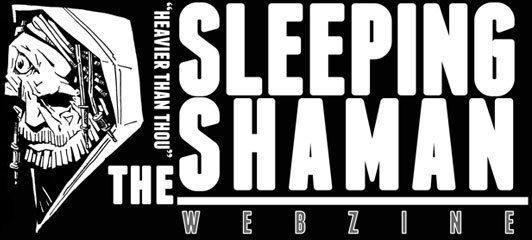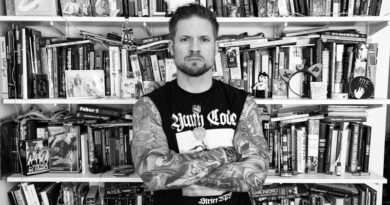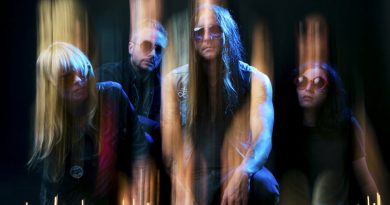In Search Of Tone: Steve Von Till Of Neurosis, Harvestman And Solo
Thirty interviews… I can’t believe I’ve talked to thirty musicians about guitars and songwriting and I feel I’ve learned so much already. To celebrate thirty interviews, we have none other than Steve Von Till! A super humble, fantastic person to talk to. He gave a lot of insight into the world of Neurosis as well as his solo projects and was very patient with me acting like the over excited fan that I am.
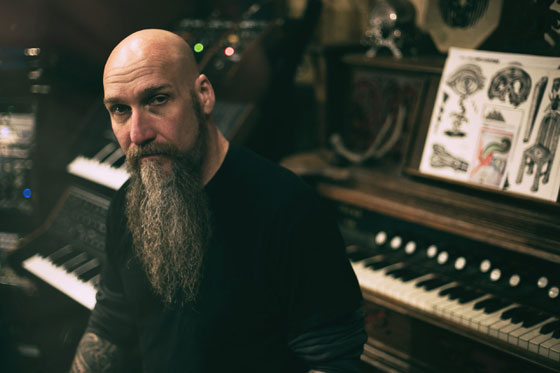
As stated above, I have learned a lot from the previous interviews but it’s amazing how different everyone approaches guitar. Tony Reed told me how he doesn’t use pedals at all because he wants to do everything with his hands. Steve is the exact opposite and goes into detail about his custom pedalboard so he doesn’t have to use his hands! There is so much creativity and the biggest thing I’ve learned is to ALWAYS try something new.
Thanks for meeting with me this is amazing so let us jump straight into gear, what amps are you using to create those epic tones?
Since ‘91, I’ve always used a two amp set up. When we were younger, we really didn’t know shit about tone. We were coming from punk rock. It was kind of like whatever works, whatever amp you have, that’s it. It’s just lots of cheap stuff of just whatever was around. I remember seeing a band called Verbal Assault and we played some gigs with them back before we had keyboards or anything and had really found our tone. I like that he played with two different amps and two different heads. I really like the frequency range he got with playing two amps. I thought that was really cool.
Some of my early inspirations of tone was probably things like Die Kreuzen and Voivod who I thought were two sides of the same coin, Die Kreuzen were punk, Voivod was metal but they were both into these crazy chord shapes and strange sounding things. And of course Sabbath. Everyone wants to lay into a Sabbath riff and have it sound right.
My gear has been fairly consistent since about ‘91, the core tone is a Mesa Boogie Mark IV…
My gear has been fairly consistent since about ‘91, the core tone is a Mesa Boogie Mark IV. I use all 3 panels, the clean channel for clean tone, mid channel for half gain, depending on the pickup it’s a slightly bluesy overdriven amp or classic rock and the lead channel on the Mark IV is really different. It’s more of a Fender circuit on steroids and sounds like Skynyrd with over dosed low end. I use a RAT pedal, not so much with distortion but to massage the lead channel a little bit. So that’s really the core tone.
The second amp changes a bit. In the early days I tried a Roland Jazz Chorus just to have a solid state to contrast the tube. I didn’t really like that. I have a Marshall Plexi and I really like that. It has a good clean tone, I wasn’t relying on it for distortion. I’ve always used pedals for whatever my second amp is. It’s always loud and clean with nice headroom. I use a pedal to get it to the half gain setting, which has for the longest time been an MXR Distortion Plus that’s now rack mounted into my pedalboard. The distortion is turned up to about 10 o’clock or so. Not much. I use another RAT pedal for the lead tone but it’s set to the 666 setting with everything to around 1 o’clock.
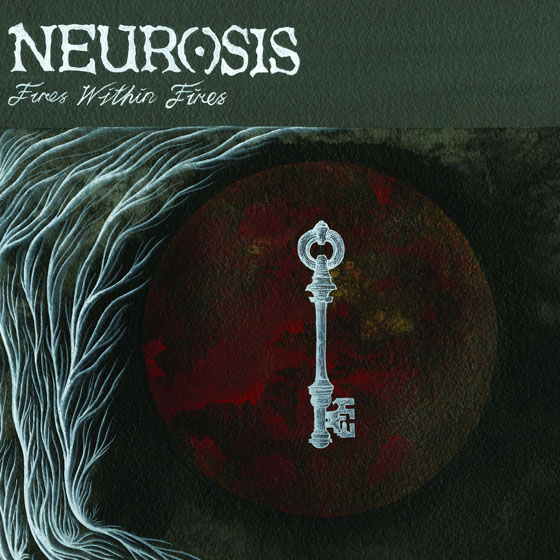
I actually have 2 different chains, my signal splits after my guitar and goes into two different gain chains to the different amps. What’s even weirder is, I control everything with my feet when there is a change, and I don’t do anything with my hands. For example, going from a clean tone to half gain or full distortion tone with an effect, I would have to switch 2 RAT pedals, turn off the Distortion Plus, turn on an effect and change the pickup selector. So I rewired all my Neurosis guitars to have a TRS jack instead of a straight 1/4 inch and I send both signals to an input with a foot controller programmable to choose either the neck or bridge pickup. In recent years, I’ve come to the conclusion that P90’s rule over humbuckers [laughs]. So, I’ve switched out all my pickups to P90’s except I have a Bartolini single coil, a very beautiful, piano like clean tone which I love. I really needed a nice clean tone for those mellow parts.
So the first thing that happens is I chose a pickup, from there it branches into two chains. On the Mesa Boogie chain, I can choose to turn the RAT on or not, plus I can choose between all 3 Mesa Boogie channels themselves. Then the other channel goes to my main pedalboard and those amps have changed over the years. It was the Marshall Plexi but then became a Fender Twin and lately, I’ve been playing the Canadian hardwired amps called Garnet. It’s the perfect blend between a Fender Twin and Marshall Plexi. It’s got the best tube tremolo ever. It goes real slow, about half the speed of a Fender Tremolo and real deep as well. I also augment both amps with an OCD pedal at times and I have a Land Of The Rising Fuzz pedal when I really want a broken 60s sound and a Fuzz Factory for self-oscillation insanity.
my favorite is the Chicago Iron Parachute Wah, it’s the one Iommi and Butler used on the Heaven And Hell tour…
I also have a wah, my favorite is the Chicago Iron Parachute Wah, it’s the one Iommi and Butler used on the Heaven And Hell tour. I don’t play traditional guitar, so I don’t need a tradition wah. I use it more as a slow filter sweep. I’ve got a Micro Synth on my board and a Mu-Tron Phaser II. For delay I have a MXR Carbo Copy Delay. I like that one because its dark. I’ve had many different Uni-Vibe pedals over the years. Most recently I’ve used the Vibe Machine by DryBell. I think there from Croatia, and I found them on the site Gilmourish where they nerd out on David Gilmour tones and I thought that would be a good place to look when I was searching for one.
I also have a whole modulation pedal board which goes to the send and receive from my controller brain. It used to be all hand made until I saved enough money to have Bob Bradshaw make me a Custom Audio Electronics switch with the proper Spaceship pedalboard. It’s basically a MIDI switcher but the difference between this and MIDI controllers is that I can change everything on the fly if needed. It also allows me to mute either amp if I want to go from a smaller sound to a bigger sound for impact.
The whole thing about all this complex signal chain is I can actually have direct guitar to amp signal and its 100% clean, no BS if I choose to unroute all that stuff. I only every have in what’s being used so there is no signal loss.
Wow. That was amazing. Your set-up is awesome and very interesting. I love the idea of that custom MIDI controller.
Yeah the idea is a lot of thinking and planning before so you don’t have to do it on stage.

It’s a great idea! What about guitars? Do you have many to choose from or have a few go to guitars?
I definitely have go to guitars. I’ve always had two guitars at a time in Neurosis, more or less identical because I want them to sound the same. I play a portion of the songs in DADGAD tuning and the others in AADGAD tuning. Since the early 90s there has never been any guitars that I really liked, and I couldn’t afford vintage guitars. I played Strat style for a long time but basically I’ve been building guitars using Warmoth parts since the early 90s. I started with a Stratocaster style because I had Yamaha Strats that’s took a lot of shit and needed something quick for tours so I started with those. I had 59 style necks with the round back and big fret wire. Over time I’ve gravitated to Telecaster and Jazzmaster shapes because I like the offsets. I don’t like pickguards and the big hunk of plastic on the guitar. I’ve always done minimal routing, just enough to get the electronics in. More wood is more tone.
I’ve been building guitars using Warmoth parts since the early 90s…
My latest two are my favorite. The Jazzmaster style has the thickest neck they make at 1 inch thick. It’s a maple neck and rosewood fret board and swamp ash body, Lollar P90 in the bridge and Bartolini single coil in the neck. It has two volume knobs because the tone is always all the way on. I had MJT Customs stain it. I wanted a sunburst but without the pickguard I realized the middle is very yellow [laughs], I told them I wanted it too look like a tweaker painted in black but never finished and they reliced it really nicely. This is the one is in DADGAD tuning, it’s my favorite.
The hard part was finding a Telecaster bridge to fit a P90. In fact, I only ever found 2 and I have both of them [laughs]. Wilkinson makes these highly adjustable bridges and on the old Telecaster bridges when tuning down to A, the guitar tech used to have to bend a piece of brass. With the Wilkinson bridges we don’t have to do that anymore. This Telecaster is the exact same wood, same hardware just a different look. It was reliced by Keith Holland.
Do you have a piece of gear you have had for a long time and you won’t get rid of?
Definitely the guitars I made for myself. I don’t think anyone else will like them. Most people don’t like the necks that thick. The thinner ones don’t feel right to me, and the modern nut width seems too wide for me as well. Also, when I first started doing solo recordings I had a crappy Yamaha acoustic that was black because Johnny Cash had a black guitar [laughs]. It sounded like shit when I recorded with it.
I went to Peacock Music in San Francisco, I told the guy my dilemma and he pulled out a 1955 Gibson J-50 which wasn’t a collector guitar because it had been broken and glued back together a few times. It sounded perfect and felt right. It has a very vintage nut width and a thick neck. I think this was because when they were making those thicker Les Paul necks, they were trying to make it effortless to go from acoustic to electric, so they made similar necks. It records perfect and sounds so gentile and warm. It’s not like a Martin and doesn’t boom so you have to move the mic far away. It has a lot of music in it and every time you pick it up it has a song in it.
That’s really cool. Is that what you used on all your solo albums?
Yes, on all of them.
I tried all the pickups I had and went back to the Bartolini because it’s that clean tone I’m used to…
I was going to ask how you got your acoustic tone and I think you answered it!
I like the sound of my Bartolini neck pickup in the electric so much and I’ve tried a bunch of acoustic pickups and think they sounded like dogshit [laughs]. I bought this Trance Amulet system that’s great for acoustics. Its glued transducers in the soundboard and it sounds really three dimensional. There’s a place called Gryphon Strings in the peninsula bay area of California. They had two Martin’s with every type of acoustic pickup routed into one with a million different guitar jacks so you can try them. That one was night and day above all the rest. I had that installed in my Gibson.
I found a mount for the sound hole for an electric pickup, and I’ve got one that can hold a humbucker, P90 or single coil. So I tried all the pickups I had and went back to the Bartolini because it’s that clean tone I’m used to. Live I’ll run that acoustic through the monitors and the desk with that Trance Amulet but if I want to jump into something electric and sound like two guitars, I’ll run it through a little Fender Deluxe and pedalboard through a real electric pickup and I think it sounds great.

Your creativity in just how you use your gear is amazing and I’m curious to hear about your writing process, especially with all the different types of music you create.
I really don’t have a writing process. With Neurosis it’s a different beast. In the early days we were playing anything we could think of. Then we tried to make things a little more epic because we liked epic music and we wanted to make epic music, but we really didn’t know how. It was really just experimenting with different styles and what we were hearing in other music we enjoyed.
How can we take what we love about Sabbath or Black Flag and these heavy chords or dissonant chords of Die Kreuzen or Voivod, moody shit of The Cure or Joy Division and how to combine all that stuff, the wall of sound of Discharge, the fucked upness of Throbbing Gristle and it took a combination of a lot of things. Not just focusing on guitar riffs, but on mood and texture and focusing on the band as a whole and what everyone is doing towards the sound.
The magic of Neurosis is everybody has their input and different people speak the loudest for the sake of the song…
I always thought when I got into heavier guitar, ‘Man, I wanna sound like Ritchie Blackmore.’ That’s because I didn’t know and his tone wasn’t really exciting. It was him playing at the same time as John Lord’s distorted organ that was really interesting. So, it turns out I wanted to sound like both of them at the same time. If you listen to Souls At Zero or Word As Law, you can hear us thinking about trying to write music. I can hear the wheels turning. To me that’s less compelling than when it come from gut level.
Once we toured Souls At Zero, we realized what we really wanted to do was trance out and leave our bodies through music. So that’s when we started to write with that in mind, less thought out and more gut level. Experimenting and latching onto what works. It was really just about sonic mood and flow. Going from one place to another, unless you need a jolt to pull you out of it. There’s no real one way, sometimes we start with a rhythm, a sample, a riff or a bassline. There’s no rhyme or reason and its always evolving. The magic of Neurosis is everybody has their input and different people speak the loudest for the sake of the song. We learned to surrender to the music.

How about your solo albums?
That whole project started by accident. I always had home recording gear which has turned into this. It used to be a 4 track in my bedroom. Probably between the early to late 90s I realized I had a bank of songs that were not Neurosis songs that I would write at 3-4 in the morning when the world was quiet. I was living in cities back then and that’s the only time the world is quiet. So, I was doing these soft spoken person songs. In 99, I felt that this was a body of work and didn’t intend on starting a solo project, but these are my songs, and I don’t hear them with anyone else.
I finished a handful of them and that became my first record. That started me on a path of writing my own songs. It’s very different too because I don’t have chops or skills, but I listen to a lot of folk music. I’m inspired and intrigued by all of it and I feel it echoes through my own unique approach by using my limitations and lack of skills to create something that I think sounds good. That’s not being humble, I really don’t have those skills. If people are sitting down to jam, I’d be pretty lost. I could mess around and maybe stay in key, but I don’t have those traditional skills. I’ve used that to evolve my own style of unique folk music with nods to American, British, Irish folk music and country.
I’ll use synthesizers, guitars, drum machines or even take something old and put it through all these crazy old filters, anything to mess it up and make it interesting…
My latest album I didn’t even mean to write it. I was at my wife’s parents house in Germany with a small electronic setup. They’ve had the same house for 500 years which is something I don’t think as Americans we can possibly imagine. I couldn’t sleep because of jet lag and watched out the window as the sun was rising. I started to channel these simple piano chord progressions. Over the next week I slowly started over dubbing some Mellotron sounds. I brought it back here to my studio when I got home and it turned into the ambient record. I don’t know where it came from although I do write Harvestman records that way. I just turn on the electronics and see what happens. I follow whatever rabbit hole opens up.
I’ll use synthesizers, guitars, drum machines or even take something old and put it through all these crazy old filters, anything to mess it up and make it interesting. It doesn’t matter what you track, that’s just a raw subject matter to paint a new painting and you can send it through effects to destroy it, burn it down and build something new out of the ashes. It’s that accidental process that led me to the ambient record.
I wanted to replace the fake piano with real piano and French horn and cello, so I contacted my friend Randall Dunn who I’ve recorded previous albums with. He said yes, told me to not be a wimp and to sing on this record. I hadn’t even thought of that, and I disagreed. I didn’t hear my voice on it at all. I took his word on it and spend the winter break I had off from school and set up a mic in the house and improvised vocals over a cup of coffee in the morning. By the end of the week, I called him and said you’re right I got all the words let do it. So that’s what I released last year. At that time of recording I said let’s do a mix without the vocals, because that’s how I originally thought of the project, and that’s what I’m releasing this year.

I love your approach of following the rabbit hole and creating from the gut. When approaching music in this way and you’re having an off day how do you get inspired instead of discouraged?
I definitely have those dark days where nothing works out. I guess I have a faith in the process and know that I need to have those days to cleanse that garbage. I also don’t play a lot. I have a full time job, I’m a husband and a dad, I run our record label and the office is on the other side of that wall [Laughs].
After school a few nights a week I have to go to the office and do the crap work side of music. Paying bills, accounting and making those types of decisions. I’ve learned to be productive with very small pieces of time. So I try to come in, get to work and I try not to waste the time. But you have to have those times where you chase something that doesn’t work. I look forward to the time I spend in my cave here and I enjoy it.
I also live on 12 acres so if I’m having a hard time, just walking through the forest helps. I say screw it and just go for a walk. Clear the mind, reproach it, come back with fresh ears.
That is very helpful. Is there a song or even part of a song that you a particularly proud of?
Usually, that goes in cycles of whatever is newest and that’s what I’m most excited about. For Neurosis it would be Fires Within Fires, for Harvestman it would be the stuff I’m working on right now that nobody’s heard yet. My solo stuff, it would definitely be my most recent record.
Thank you again for sharing your perspectives of songwriting and the creative way you create you tones and textures in music. I really appreciate it.
Steve Von Till’s latest solo album A Deep Voiceless Wilderness is out now via Neurot Recordings.
Label: Neurot Recordings
Steve Von Till: Official | Facebook | Bandcamp | Twitter | Instagram
Neurosis: Official | Facebook | Bandcamp | Twitter | Instagram
Interviewed by: Josh Schneider
